Question
-------------------------
Followup To
Question -
i have a baby red ear slider ive had it for about 2 mounth last week i noticed that a white stringy strip was comeing out of his behing,what is this and is it good or bad
his shel was geting soft and i got it these calcium things they work fine but now i see there is a green dot on his shell is that a syptum of a sickness or disease
Answer -
Soft shell is a sign that things are seriously wrong.
The problem is that turtles, including the Red-ear sliders (RES), are NOT easy pets- even though popular thinking and many pet shops say that they are. Baby turtles are even harder to care for than adults.
You can get some great care info at sites like http://www.redearslider.com or http://www.tortoise.org
A brief care outline would include:
HOUSING:
- at least 10 gallons of water per inch of turtle. RES can hit 4-6" in a year or so, so it is smart to think ahead about a way to hold 40-60 gallons of water. Aquaria this big are expensive, so most use plastic tubs or kiddie pools.
- heat the water to about 80, and find ways to keep it very clean. It generally takes about 50-100% more filtration than the package says, as well as regular water changes, etc.
- basking area(s) that allow the turtle to get totally out of the water and sun itself in warm light that simulates sunlight as much as possible, including UV-B rays. The basking area(s) should be heated to about 90.
DIET:
- DO NOT FEED it light-green head lettuce, hamburger, cheap packaged turtle food (with mostly dried insect parts), or 'flaked' turtle food.
- use a high-quality turtle pellets to start with. You can add variety to the diet as you learn more. Zoo-Med, T-Rex, Masuri, Monster, and so forth make excellent turtle pellets.
- Wardley and Tetra (Tetrafauna) make OK pellets- ReptoMin is a common turtle food. I would use a higher quality option while your turtle is ill.
- in prepared foods, you get what you pay for. Cheaper foods use cheaper, less nutritious components.
- feed daily while young. If it still seems hungry after a decent meal, try offering dark leafy greens.
- an average serving is about the size of the turtle's head.
- break large pellets up if necessary
Most keepers find that moving their RES into a roomier, warm habitat with the right food fixes a lot of things up nicely.
I hope it works for you as well!
(Oh- the white thing is probably a strand of urea (gelled urine) with some fiberous waste holding it together. The same things that help softshell will help that as well.) i feed him repto min baby turtle pelets and sun dried baby shrip and i by a dozen feeder gupies (that he loves, and eats all of them like a champ in about a week) is that a good diet fro my red ear slider and how can you tell the sex of a baby r.e.s. and my tank is clean (5 gallons) but it smells bad i tried carbon inserts for the filter but it just dont help do u recamend a certain filter sytem
(i was just at petsmart and im working overtime to get more money to get a turtle kit that has a 20 gallon tank should i wait till he gets biger to buy it or buy it asap)
AnswerA 20 gallon tank, filled part-way, would be good for a 1-2" turtle, and yours should hit 4" pretty soon.
Instead of costly glass aquaria, most keepers find they like plastic tubs better. Sterilite or Rubbermaid tubs cost far less and work just fine- especially the wider versions, rather than the 'deeper' ones. Kiddie pools also make great turtle tanks, but take up a lot of room.
Some keepers use a tub for most of the time, then a 'display tank' for some of the time. This is a good idea, except it means the turtle gets handled a lot- which is kind of stressful in its current condition. Might work nicely a little latter, however, when it is better.
In general, pet 'kits' are not always the smart move. I don't know what this kit has, but I'd bet that you could do a better job and gather a great kit on your own.
For example:
HOUSING:
- Rubbermade 28 gallon 'latch lid' tub, $22 (Lowes). Upgrade to a larger tub or pool later.
- Basking rafts, start with the $9 PetSmart raft, then make your own
- Simple wire mesh 'lid' to prevent escapes and keep out curious dogs, etc. The best 'lid' would be a simple mesh 'box' that also gives you more room above the cage.
LIGHTING:
- Daylight 'mini' flourecent bulb, $6 (Lowes)
- Blacklight bulb, $4 (Lowes, used for UV light
- Brooder heat lamp, $4 (Lowes, fo heat on basking site)
- Standard light bulb
- 4 metal reflector 'clamp-on' lamps, at least 2 with ceramic sockets, about 6$ each
- 4 timers, about $8 each
NOTE: Start with the daylight and blacklight bulbs and lamps, then add the other parts as money allows
HEATING:
- tank heater, $15-20 (one will probably be OK for now- add more as weather gets cooler if needed)
- thermometers, 2 or 3, $5. Add as soon as you can afford it.
- heater covers can be handmade from wire mesh to keep curious turtles away from the hot heater.
FILTRATION:
- Siphon/gravel washer, $4 (PetSmart)
- "Whisper In-tank Power Aquarium Filter 40", $22 (PetSmart). Always use more filtration than necessary. You can add filtration later if you use the vac siphon aggressively to keep things clean in the meantime. Most keepers use 2 or 3 medium size filters scatered in the tank.
DIET:
- T-Rex Aquatic Turtle Diet, Juvenile, $5 (PetSmart)
- Zoo Med Turtle Treat, $6 (PetSmart)
OR any other combination of 2 different types of high quality foods for aquatic turtles
OTHER. If desired, as money allows, you can add:
- live plants, snails, catfish
- pebbles for the bottom- this is purely decorative, however and many keepers don't bother
- more rafts, driftwood, etc.

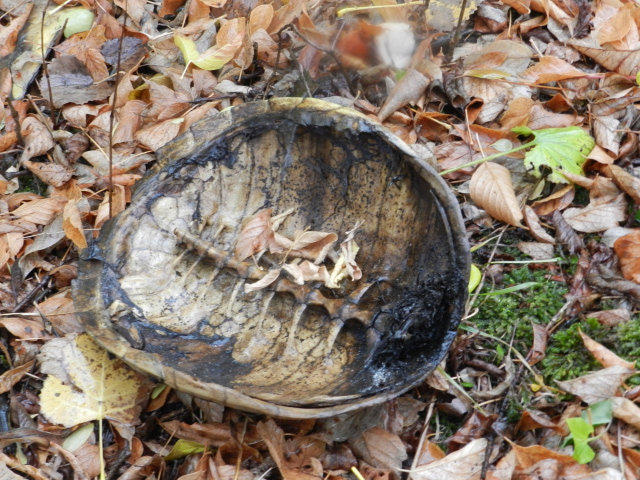 Found top of empty turtle shell
QuestionQUESTION: Hi my name is Angela and I live in Mi
Found top of empty turtle shell
QuestionQUESTION: Hi my name is Angela and I live in Mi
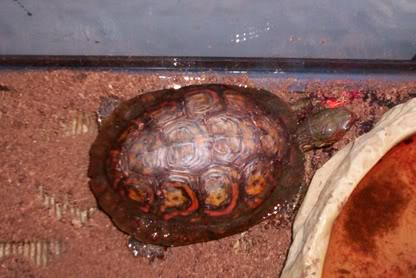 land/box turtle
QuestionQUESTION: My turtle has been getting an algae-l
land/box turtle
QuestionQUESTION: My turtle has been getting an algae-l
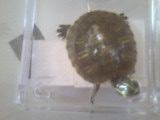 Wild Turtle
Question
Turtle I found at the
I have a small t
Wild Turtle
Question
Turtle I found at the
I have a small t
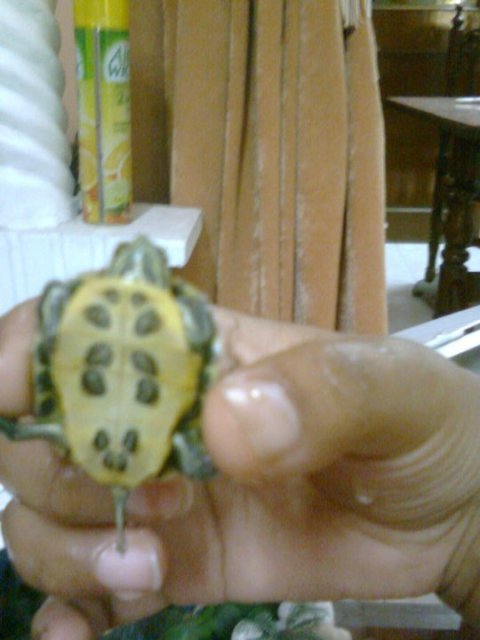 turles pregnancy...
Question
gangster
i have bought a red eared slider turt
turles pregnancy...
Question
gangster
i have bought a red eared slider turt
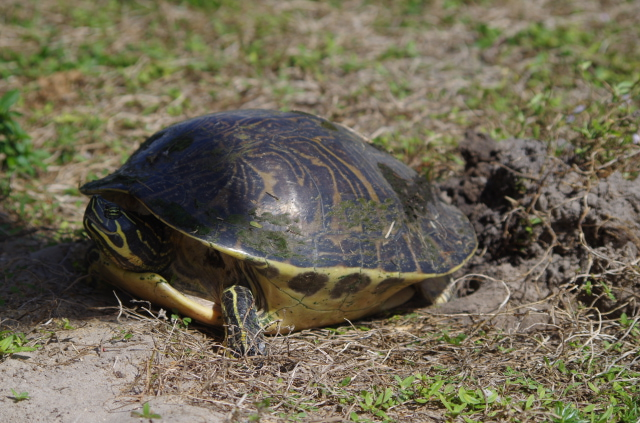 Peninsula Cooter laying eggs
QuestionPeninsula Cooter
QUESTION: I have just w
Peninsula Cooter laying eggs
QuestionPeninsula Cooter
QUESTION: I have just w